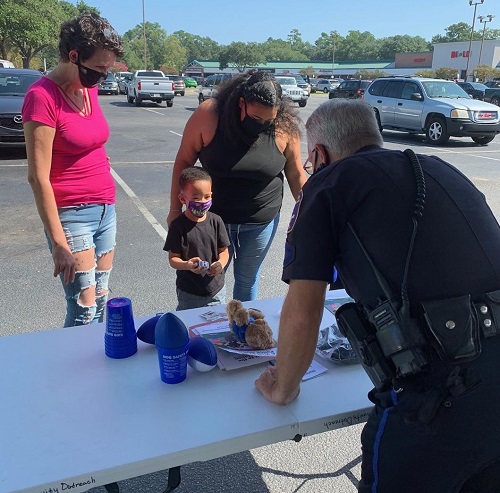

The presence of Police Athletic Leagues is increasing in cities across the country — thanks to new efforts to strengthen local community relations among residents and the men and women in blue.
“Studies have shown that if a young person engages and interacts with … law enforcement on the ballfield, gym or classroom, the youth will likely come to respect the laws that police officers enforce,” according to the website for the National Association of Police Athletic/Activities League Inc. “Such respect is beneficial to the youth, the police officer, the neighborhood and the business community.”
More than 300 PAL chapters are active either within law enforcement agencies or operating as nonprofit organizations, and serving kids ages 5 to 18. Many PALs provide opportunities for participation in sports tournaments, clinics and showcases.
“[This is] what people have said we need in Syracuse for many years to create more positive outlets for youth and build stronger relationships between young people and our police officers,”Syracuse (N.Y.) Mayor Ben Walsh said in a statement recently announcing the creation of the Syracuse Police Athletic/Activities League, in cooperation with the New York State Police, the Onondaga County Sheriff’s Office, other law enforcement entities and various community partners.
The goal of the program, according to Syracuse.com, is to improve the relationship between the department and local youths and reduce juvenile crime. Initial offerings of the Syracuse PAL will include football, soccer, dance and basketball clinics throughout the month of July.
In acknowledgement of the work accomplished by the New York City Police Athletic League, Fidelis Care— a mission-driven health plan offering coverage for children and adults in the State of New York — recently awarded the league a $10,000 grant to help support recreational, educational, cultural and social activities throughout the year. The funds will assist in the operation of several sports, recreation and educational programs for approximately 20,000 kids across New York City’s five boroughs.
Meanwhile, Michigan lawmakers introduceda plan in late June that, if approved, would provide $15 million over five years to the Detroit Police Athletic League’s Community Connection Initiative. That program seeks to increase athletic activity and mentorship programs around the state. The PAL-related proposal “is in addition to an $80 million plan from Michigan Republican lawmakers to boost recruitment of law enforcement officers, support mental health services, increase training and provide incentives for community policing ventures,” according to abc12.com, a television station based in Flint, Mich.
“I’ve worn the badge, and I’ve seen the importance of strong community policing. When you make it a real priority, it can change lives and make real, tangible improvements in public safety,” said Michigan House Speaker Jason Wentworth, a Republican who served five years as a military police officer and completed a tour in South Korea. “PAL stands out as exactly the sort of program we are looking to help. The Police Athletic League is [a] strong success story in Detroit. In a time of division and political posturing, they’re making the community safer by bringing people together.”
The Detroit PAL offers programs in 12 sports for a variety of age and skill levels, as well as academic and leadership development programs, and it served more than 143,000 participants between 2007 and 2018.
In San Antonio, the local PAL program works with young people in baseball, boxing, football, soccer, CrossFit and esports, and Julio Cavazos says interest has increased in the wake of COVID-19.
“I needed — and these kids needed and everybody needed — an outlet,”local police officer Julio Cavazos told KSAT.com. “We were tired of being cooped up. Anything I can do to keep these kids engaged in outside school activities besides drugs and violence. Keep them off the streets and keep them accountable. … I want to expand this service to more kids who may be in worse situations. I want to tell them to not see me as a police officer but to see me as their friend. There have been great barriers of mistrust between the police and the community for many, many years. … If we work together, we can tear that down and build a bridge over the rubble and stand on equal footing and see each other face to face.”
With goals like those, it’s no wonder that more communities are forming PALs (such as Syracuse) and more states are providing additional funding to the organizations (as in Michigan).
For more information about PALs, contact your local law enforcement agency or visit the National Association of Police Athletic/Activities League Inc.’s website.

